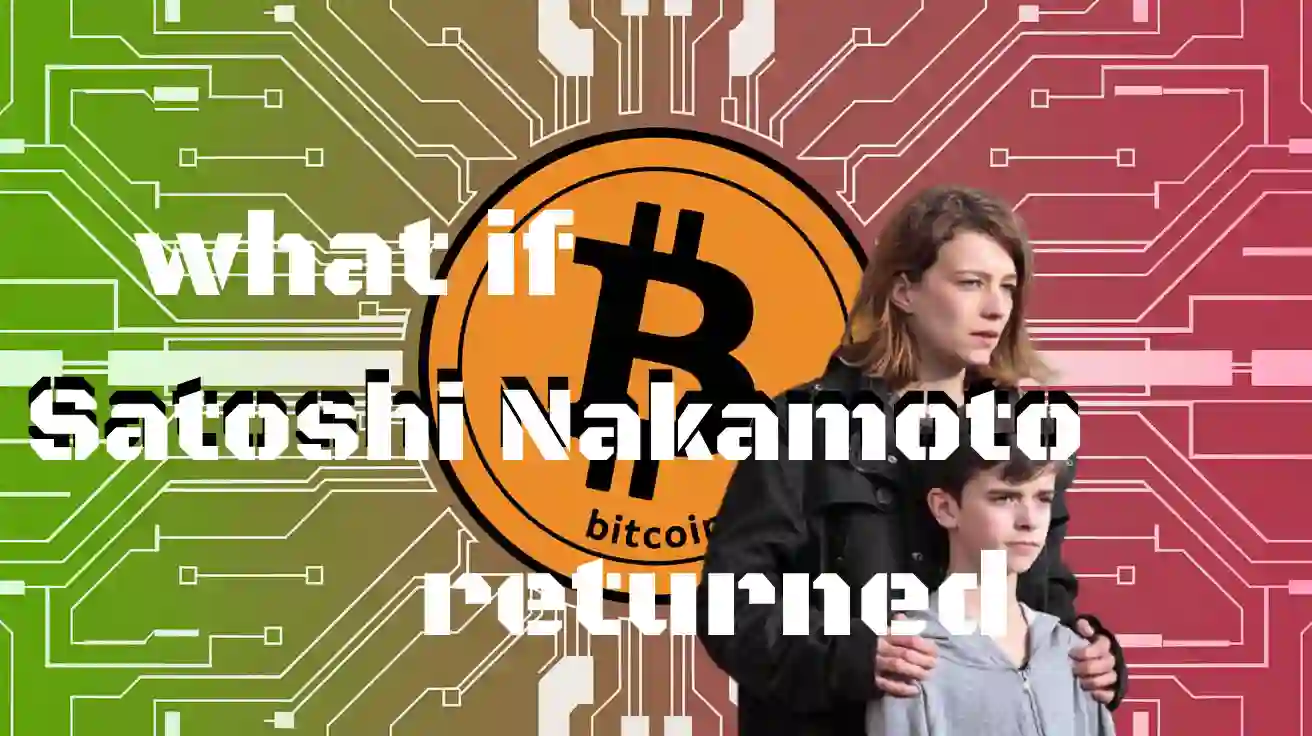For over a decade, the identity of Bitcoin’s creator, Satoshi Nakamoto, has remained one of the greatest mysteries in the world of technology and finance. After his last known communication in 2011, he disappeared without a trace, leaving behind a revolutionary digital currency and a trove of untouched Bitcoin worth billions. But what if one day, against all expectations, he returned?
Would it spark excitement or chaos? Would it change the course of Bitcoin forever? Here’s what experts think might happen if the elusive founder of the world’s largest cryptocurrency suddenly reappeared.
The First Signs of a Return
The return of Satoshi Nakamoto would likely begin as a whisper—anomalies detected in long-dormant Bitcoin wallets, strange activity on the blockchain, or a cryptic message appearing online.
A cybersecurity researcher might spot a tiny, seemingly insignificant transaction—perhaps a single satoshi (the smallest unit of Bitcoin) moved from one of the wallets linked to Nakamoto. Given that these wallets have remained untouched since Bitcoin’s earliest days, such a transaction would be earth-shattering news.
Social media would explode with speculation. Was it a hack? A hoax? Or was it really him? As the evidence mounts, panic and excitement would spread through the crypto world like wildfire.
If Nakamoto confirmed his return, the consequences would be far-reaching—financial, technological, and even political.
The Market Shockwave
One of the biggest concerns surrounding Satoshi’s return is the sheer amount of Bitcoin he supposedly controls. Estimates suggest he mined around 1 million BTC, worth over $60 billion at recent prices. That’s nearly 5% of Bitcoin’s total supply.
If he suddenly decided to sell even a fraction of it, the market could collapse overnight. Prices would plummet as traders rushed to liquidate their holdings, fearing an unprecedented Bitcoin crash.
But would he really sell? Some argue that if Satoshi were interested in profiting from his creation, he would have done so long ago. Others believe that he might instead choose to use his Bitcoin for a greater purpose—perhaps funding innovation or redistributing wealth.
Regardless of his intent, his presence alone would shake the very foundations of the crypto market.
A Power Shift in Bitcoin’s Leadership
Over the years, Bitcoin has evolved far beyond its original vision. A decentralized network of developers, miners, and investors now control its direction, with no single authority governing the system.
But Satoshi Nakamoto’s return could change everything.
His writings and early posts are treated as sacred texts in the Bitcoin community. If he were to step forward and advocate for a particular change—whether technical or ideological—many might feel compelled to follow his lead.
Would he support the growing institutionalization of Bitcoin, or would he oppose it? Would he approve of Bitcoin’s current role as “digital gold,” or would he push for its use as everyday money?
If his views clashed with those of current developers and influencers, it could lead to division within the Bitcoin ecosystem. Some might resist his influence, arguing that Bitcoin belongs to no single person—not even its creator.
Regulatory and Legal Implications
Satoshi’s reappearance would also bring a wave of legal and regulatory challenges.
Bitcoin has long operated in a legal gray area, with governments struggling to define and regulate it. If the real Satoshi Nakamoto were identified, authorities might attempt to hold him accountable for the global financial revolution he started.
Would he be seen as a hero—or a financial criminal?
Some might argue that Bitcoin’s disruption of traditional finance makes him an enemy of the state. Others might see him as a visionary who created a new, decentralized financial system.
There’s also the question of taxation. If he were to access his massive Bitcoin fortune, tax authorities around the world would likely take an interest. Could they legally demand a cut of his wealth?
And what if governments pressured him to exert control over Bitcoin? Would he comply, or would he fight to keep Bitcoin truly decentralized?
Proof of Identity: Can It Be Faked?
Even if someone claiming to be Satoshi Nakamoto surfaced, proving his identity would be incredibly difficult.
Would signing a message with his early Bitcoin keys be enough? Some would argue that those keys could have been stolen. Would publishing private emails or drafts of the Bitcoin whitepaper be convincing? Skeptics would claim that documents can be forged.
The real Satoshi might need to go further—perhaps by moving Bitcoin from one of his original wallets. But even then, doubt would remain.
Would people believe him, or would conspiracy theories emerge? Would multiple “fake Satoshis” appear, each claiming to be the real one?
In the absence of undeniable proof, the return of Satoshi Nakamoto could lead to more questions than answers.
A Cultural and Philosophical Reckoning
Beyond the financial and technological impact, Satoshi’s return would force the world to confront deeper philosophical questions.
For many, Bitcoin is more than just a currency—it’s a movement. It represents decentralization, financial sovereignty, and resistance to centralized control. But what if Satoshi himself had a different vision?
What if he declared that Bitcoin was never meant to be a store of value but rather a means of everyday exchange? What if he dismissed the notion that Bitcoin was ever meant to replace traditional finance?
Would his words carry weight, or would the community reject his authority?
And what if he had completely abandoned Bitcoin’s ideals? What if he had moved on, uninterested in the revolution he started?
His return could inspire renewed faith in Bitcoin’s mission—or shake it to its core.
The Final Scenario: A Gift to the World?
Some speculate that if Satoshi ever returned, he might do something radical with his fortune.
One dramatic possibility? He could burn his Bitcoin—permanently removing it from circulation, proving that he never sought personal gain.
Or he could donate it to fund technological advancements, humanitarian efforts, or even universal basic income.
Such an act would solidify his legendary status, making him a historical figure comparable to the greatest visionaries of all time.
But in the end, the greatest mystery remains: Will he ever return?
Conclusion: A Myth That Endures
Satoshi Nakamoto’s disappearance has cemented his legacy as one of the most enigmatic figures of the modern age. His absence has allowed Bitcoin to evolve without a single point of authority, reinforcing its decentralized ethos.
If he were to return, it could bring either chaos or clarity—or perhaps both.
Until then, the legend of Satoshi Nakamoto continues to grow, inspiring new generations to build upon his groundbreaking creation.
Whether he is truly gone or merely watching from the shadows, his influence on the world of finance and technology will endure for generations to come.


